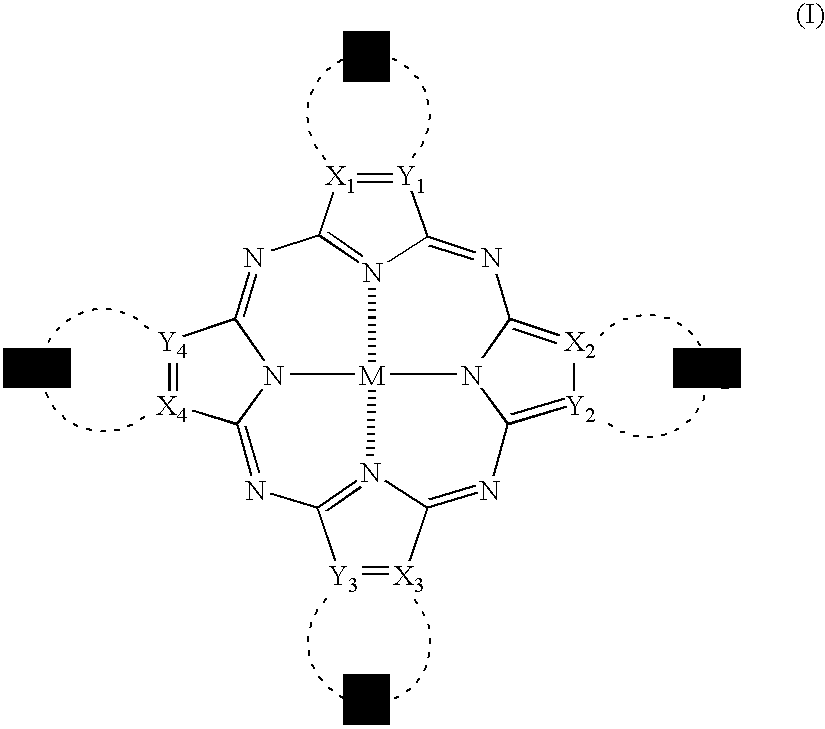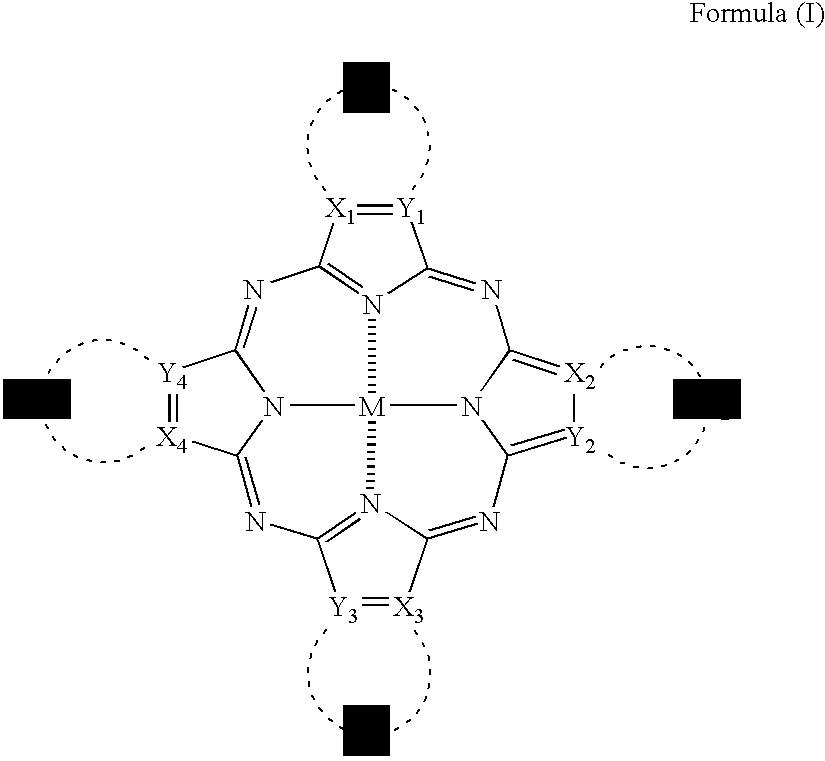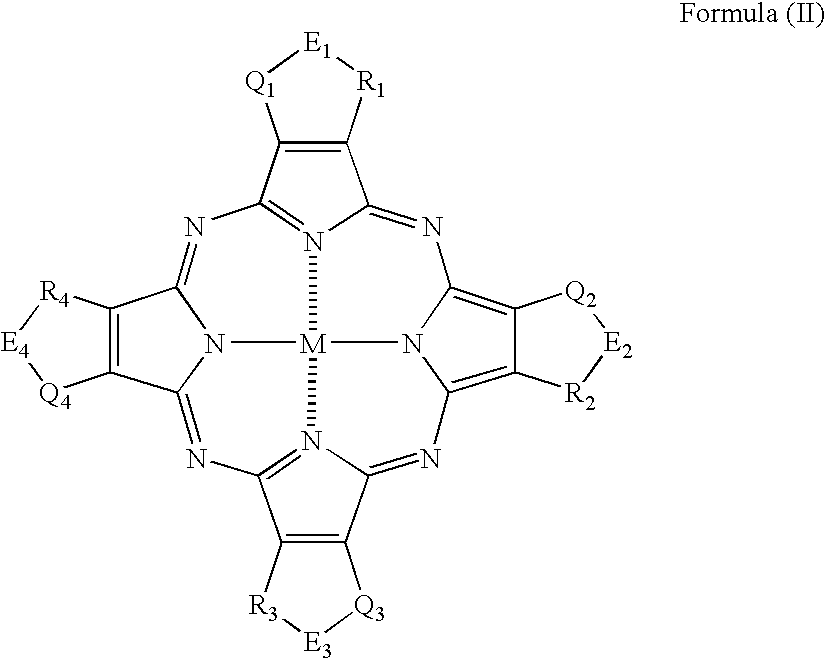Phthalocyanine compound, ink, inkjet recording method, and image forming method
a technology of phthalocyanine and compound, which is applied in the field of phthalocyanine compound, ink, inkjet recording method, image forming method, can solve the problems of inability to meet ink stability, insufficient fastness of phthalocyanine compounds to oxidize gases, and difficult to seek pigments that meet these requirements at high levels, so as to improve the resistance to color fading and make an image fast
- Summary
- Abstract
- Description
- Claims
- Application Information
AI Technical Summary
Benefits of technology
Problems solved by technology
Method used
Image
Examples
synthesis examples
[0294]The synthesis of the phthalocyanine compound (or mixture) of the invention will be described below in detail with reference to the following Examples, but it should not be construed that the invention is limited thereto.
[0295]Representative phthalocyanine compounds (or mixtures) of the invention can be derived from, for example, the following synthesis route. In the following Examples, λmax means an absorption maximum wavelength; and εmax means a molar absorptivity at the absorption maximum wavelength.
[0296]Values of oxidation potential of substituted phthalocyanine compounds of the invention as synthesized in the following Examples (Synthesis Examples) and Comparative Compounds 1 to 3 were measured under the following conditions. That is, the oxidation potential was measured in N,N-dimethylformamide containing 0.1 moles / dm3 of tetrapropylammonium perchlorate as a supporting electrolyte (concentration of the compound: 0.001 moles / dm3) using graphite electrodes and using POLAR ...
synthesis example 1
Synthesis of Compound 1
[0298]Under a nitrogen gas stream, 288.2 g of 4-nitrophthalimide (manufactured by Tokyo Kasei Kogyo Co., Ltd.) was dissolved in 1,442 mL of DMSO (dimethyl sulfoxide), to which was then added 333 g of sodium 3-mercpto-propane-sulfonate (85%) while stirring at an internal temperature of 20° C. Subsequently, 173.8 g of anhydrous sodium carbonate was gradually added to the mixture while stirring at an internal temperature of 50° C. The reaction mixture was heated to 70° C. while stirring, and stirring was continued at the same temperature for one hour. After cooling to 40° C., the reaction mixture was filtered by a nutsche filter, and the filtrate was poured into 2,885 mL of methanol and crystallized. Subsequently, the mixture was stirred at room temperature for 30 minutes, into which was then poured 1,442 mL of isopropanol, and the mixture was cooled to an internal temperature of 10° C. while stirring. Deposited crude crystals were filtered by a nutsche filter an...
synthesis example 2
Synthesis of Compound 2
[0299]Compound 1 (485.0 g) was added to a mixed solution of 48.5 mL of acetic acid and 1,500 mL of H2O, and 15 g of Na2WO4.2H2O was added to the mixture while stirring at an internal temperature of 25° C. The temperature was then raised to an internal temperature of 45° C., thereby dissolving the mixture. Subsequently, 374 mL of aqueous hydrogen peroxide (30%) was gradually added dropwise while taking care of heat generation. After stirring at an internal temperature of 50° C. for 60 minutes, 88.2 g / 400 mL of an aqueous solution of sodium sulfite was added dropwise to the reaction mixture at an internal temperature of 50° C., to which was then added dropwise 532 mL of isopropanol at the same temperature, followed by cooling to 10° C. Subsequently, stirring was continued at the same temperature for 30 minutes, and deposited crystals were filtered by a nutsche filter and washed with 525 mL of isopropanol, followed by drying to obtain 462.6 g of Compound 2. 1H-NM...
PUM
| Property | Measurement | Unit |
|---|---|---|
| dissociation index pKa | aaaaa | aaaaa |
| pKa | aaaaa | aaaaa |
| pKa | aaaaa | aaaaa |
Abstract
Description
Claims
Application Information
 Login to View More
Login to View More - R&D
- Intellectual Property
- Life Sciences
- Materials
- Tech Scout
- Unparalleled Data Quality
- Higher Quality Content
- 60% Fewer Hallucinations
Browse by: Latest US Patents, China's latest patents, Technical Efficacy Thesaurus, Application Domain, Technology Topic, Popular Technical Reports.
© 2025 PatSnap. All rights reserved.Legal|Privacy policy|Modern Slavery Act Transparency Statement|Sitemap|About US| Contact US: help@patsnap.com



